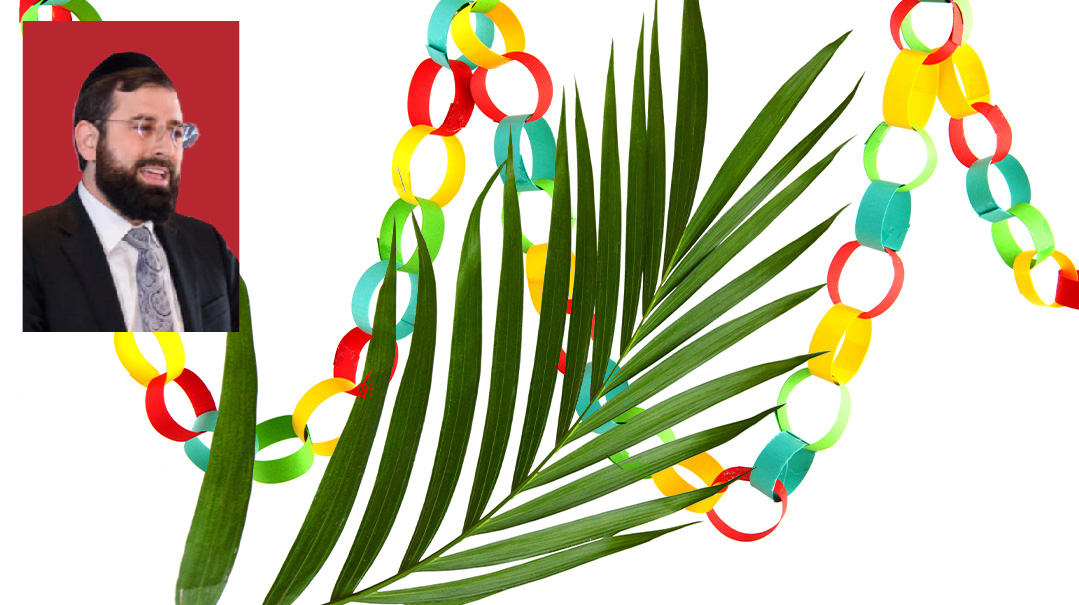The Traveling Rabbis
| August 1, 2023On the road with Jewish travelers of the past
Traveling is not a foreign concept to the Jewish People. Beginning with Avraham Avinu leaving his birthplace to resettle in Eretz Yisrael, our story is a millennia-long journey from one place to another with many stops in between. And every August, as the heat of the summer reaches its peak, the world at large charts vacation itineraries, taking to the roads, the rails, and the air.
But from a Torah perspective, is traveling ideal? Is there, perhaps, a spiritual preference for remaining at home?
In parshas B’haalosecha, we learn that one who was unable to bring a Korban Pesach on the 14th of Nissan may bring a Pesach Sheini, a month later. However, the pasuk specifies, “V’ha’ish asher hu tahor uv’derech lo hayah — a man who is pure and was not on the road” must bring the Korban Pesach at the proper time.
Rabi Akiva Eiger interprets this verse homiletically: “And a man who is pure,” the pasuk tells us, “and was not on the road.” This hints to us, he writes, that the man who is “pure,” meaning spiritually untainted, is the man who does not travel. Traveling, Rabi Akiva Eiger explains, presents many challenges to spiritual observance.
However, that said, we do find great scholars who traveled extensively. The following are four who traversed incredible distances and accomplished amazing things.
1.The Chida.
Rav Chaim Yosef Dovid Azulai (1724–1806), known universally as the Chida, clocked a mind-boggling amount of miles over the course of many years of travel. In 1753, the Chida visited 148 cities, and in 1773, he visited 156 cities. He did this for the purpose of collecting money on behalf of yeshivos in Eretz Yisrael. The Chida loved Eretz Yisrael with a burning passion and, whenever he was treated disrespectfully during his travels, it upset him — only because he saw it as an affront to the honor of Eretz Yisrael. In his sefer Yosef Ometz (siman 19), the Chida quotes the Sifri that says dwelling in Eretz Yisrael is a merit equal to all mitzvos. How great it is, he concludes, to invest in those studying Torah in Eretz Yisrael, thus gaining a share in the mitzvos of limud haTorah as well as yishuv Eretz Yisrael. The Chida recorded these travels in a sefer called Maagal Tov.
There is another, deeper explanation for the Chida’s many travels. The story goes that Rav Shalom Sharabi (known as the Rashash) summoned his two closest students, the Chida and Rav Chaim de la Rosa, to help him perform a series of Kabbalistic rituals to hasten the arrival of Mashiach. When they began, they heard a heavenly voice warning them to stop, as it was not yet time for Mashiach’s arrival. To ensure that they would not repeat their attempt, the Voice decreed that one of the three must be sent into exile. They cast a lottery to determine which of them would leave. The lot fell on the Chida.
2. Benjamin of Tudela.
He was likely the earliest Jewish traveler. We know little about his personal life, but it seems that his travels began in the year 1173. It does not appear that he undertook his journeys for the sake of research. But he plied the roads of practically the entire known world at the time, reporting on the civilizations he encountered. His accounts were recorded in a diary that has since been translated and is studied to this day by historians and scholars. He started in Italy, then went to France, then Greece, then Turkey, Syria, Eretz Yisrael, Babylon, Persia, Tibet, India, China, Yemen, Egypt, and just about anywhere else he could get to.
Some theorize that the purpose of these travels was for business, others conjecture that he was collecting money for yeshivos in Eretz Yisrael. Much of what we know today about the life and culture of Jewish communities during the times of the Rishonim comes from his writings.
3. Rav Ashtorei Haparchi.
This was not his real name; the name Haparchi comes from the Hebrew word perach, which means “flower.” The meaning of the word Ashtorei is presumably derived from “Ish Torei,” which means “man of travels.” He was born in 1286 in Florence, Italy, and passed away in 1357 in Eretz Yisrael. Among many other great scholars, he was also a student of Rabbeinu Asher — better known as the Rosh.
In 1312, Rav Ashtorei Haparchi decided to move to Eretz Yisrael, something virtually unheard of then. Once there, he began intensive topographical research to determine the exact breadth and length of the land. He initially settled in Jerusalem, but soon after moved to Beit She’an. He then spent two years in the Galilee and then five years in the rest of Eretz Yisrael. In 1322 he began to record all his findings in his magnum opus, Kaftor Va’ferach. He also extensively researched Har Habayis, trying to determine precisely where each component of the Beis Hamikdash was.
4. Rabbi Yehosef Schwartz.
Rav Schwartz was born in Germany in 1804. He entered the Rabbinerseminar at the age of 14 and graduated at 17. He then entered beis medrash in Reitzberg and, after five years, began studying the halachos of Eretz Yisrael. In 1829 he published a sefer called Tevuos Ha’aretz, depicting the maps of Eretz Yisrael. He then told his family that he was leaving Germany to settle in the Land of Israel. Again, this was unheard of at the time.
His travels turned out to be difficult; he fell ill along the way, which significantly prolonged his journey. He finally made it to Eretz Yisrael in 1833. He settled in Jerusalem as the only Ashkenazi in the city. (At that time, the students of the Vilna Gaon, who had immigrated to Eretz Yisrael decades before, were living in the North, because the Muslim leadership forbade them from settling in Jerusalem.) Since he lived among Sephardim, he adopted their customs and married a girl of Sephardic origin.
Rav Schwartz invested an enormous amount of time and effort into determining the correct times for alos hashachar, neitz hachamah, shkiah, and the like. This required him to climb certain mountains thousands of times so he could observe the sun’s positions from specific vantage points. His time-consuming work resulted in his missing many a tefillah b’tzibbur. Later in life, he fasted for every day that he missed Krias HaTorah.
At one point, he even traveled to America to determine where one should make the blessing “she’asah es hayam hagadol.” While there, he met Rabbi Isaac Leeser, the first one to translate the Chumash into English. Rabbi Leeser was so impressed with Rav Schwartz that he translated his sefer Tevuos Ha’aretz into English as well.
Rabbi Daniel Glatstein is the mara d'asra of Kehilas Tiferes Mordechai in Cedarhurst, New York, and author of numerous seforim in Lashon Hakodesh and in English for ArtScroll. He is an international lecturer and maggid shiur. His thousands of recorded shiurim are available on Torahanytime.com, his website rabbidg.com, and other venues.
(Originally featured in Mishpacha, Issue 972)
Oops! We could not locate your form.







